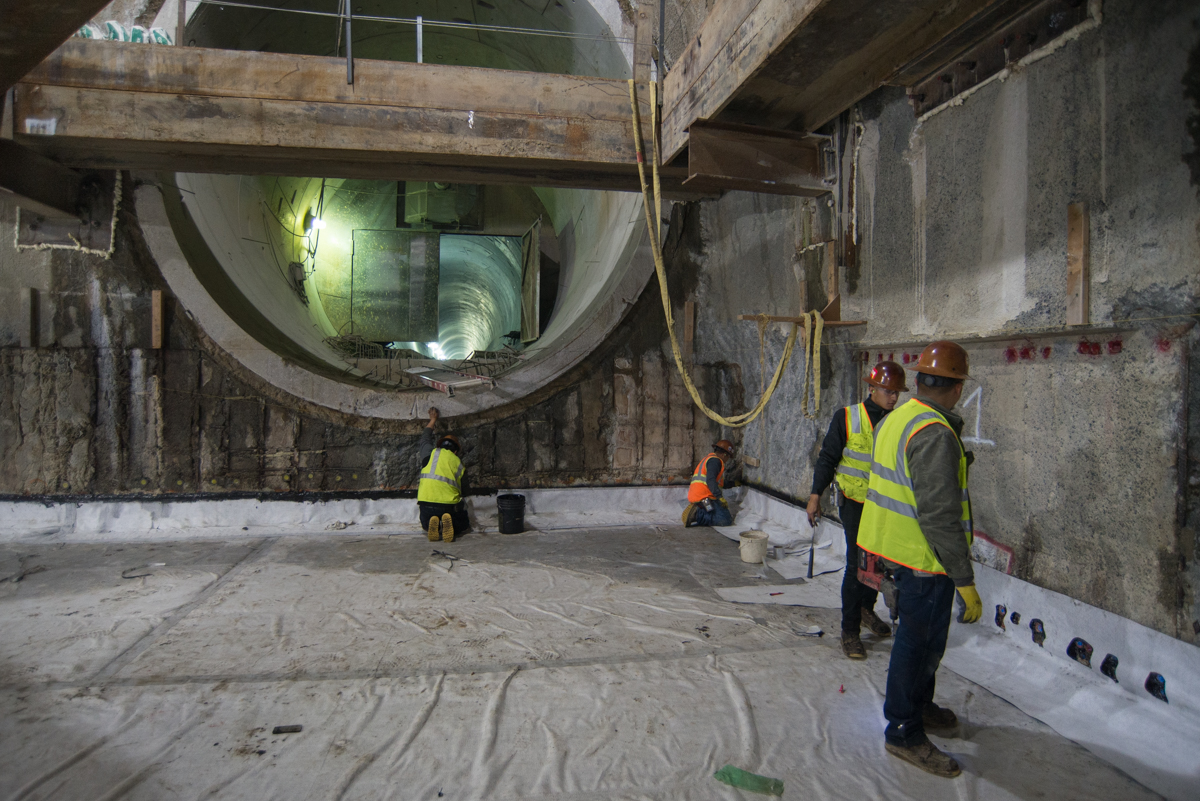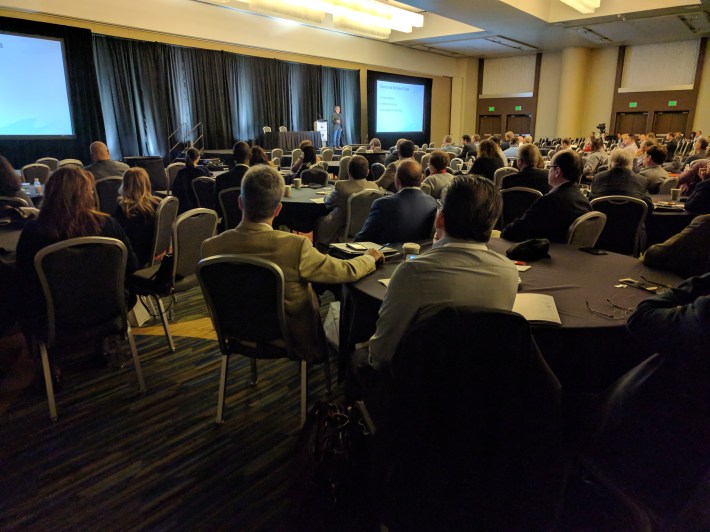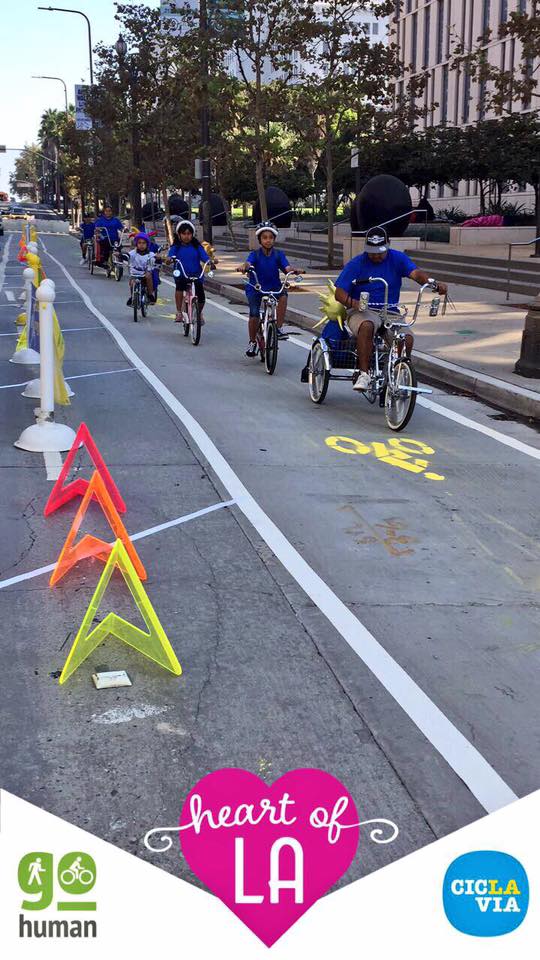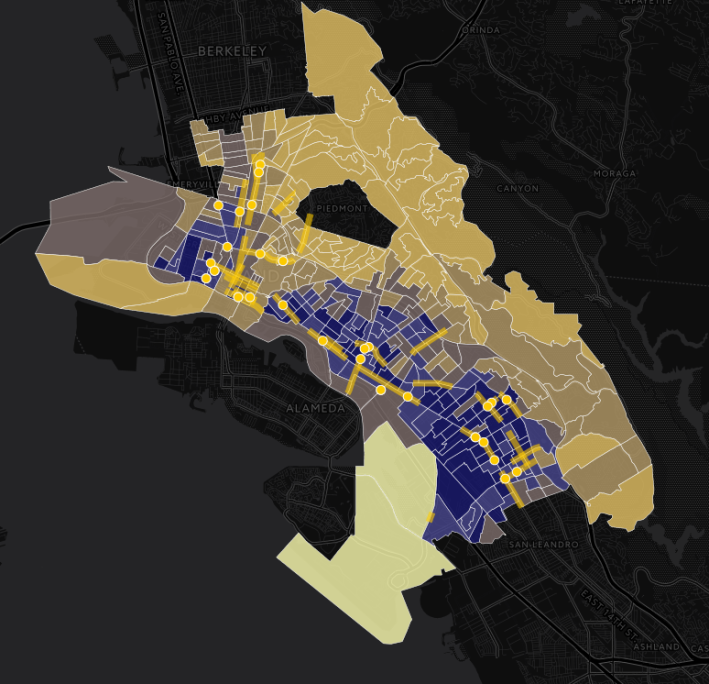Transit, Vision Zero, Livable Streets, and other Highlights of the “Focus on the Future” Conference
5:21 PM PDT on October 31, 2017

The Central Subway construction. Photo: SFMTA
"What if San Francisco becomes the next Detroit?" asked Jonathan Miranda, Director of Strategy at Salesforce.com, during a keynote speech this morning at the "Focus on the Future" conference in downtown San Francisco. Given the region's meteoric growth, that may seem far fetched--but no more so than Detroit's fall after the booming years of the auto industry. He said that given San Francisco's inability to build sufficient housing, that's a real possibility. "Companies are moving to Austin, Denver, Seattle--what happens if software and Silicon Valley start looking for a different place?"
Miranda's warning was part of a theme at the conference about how important it is for the Bay Area to address issues such as housing costs, transportation, and the safety and livability of our streets. The conference is run by the "Self-Help Coalition," an organization of 24 different California transportation authorities and government organizations which share planning and policy intel. The event also featured tours of the Central Subway, the Transbay Transit Center, and a discussion of the Better Market Street plan.

"The Central subway should be operational in 2019. The Transbay Terminal, and the downtown extension, will eventually bring regional rail and high-speed rail into downtown SF," said Luis Montoya, who manages the Livable Streets division of SFMTA, at a breakout panel on complete streets. The city is investing $9 billion on these projects, he said.
Of course, once people use these transit lines to get into the center of the city, they still will need a way to get around within downtown--and crowding more cars onto the street is not a solution. Montoya talked about SFMTA's ongoing project to turn 2nd Street into a more bikeable street. "It's currently four lanes, with two lanes in each direction that serves lots of freeway traffic," he said. But with all the housing that has now grown around 2nd, "It is really time to transform second street, by narrowing the street from four lanes to two lanes, adding protected bike lanes, and widening sidewalks."

But eliminating car lanes inevitably leads to political resistance--and managing that blowback was another major theme of the conference. Stephen Patchan, a speaker with the Southern California Association of Governments, talked about the "Go Human" approach to building support.
He said that renting a big room and having people come learn about a complete streets project just doesn't work to build support.
"Gone are the days of us planners and engineers getting into a room with three tables and maps and we know everyone in the room, because they’ve come to the last 30 meetings," he said.
The "Go Human" approach means doing outreach at local events, fairs, etc--things such as Sunday Streets in San Francisco or its equivalent, Ciclavia in Los Angeles--and setting up "pop up" displays of bike lanes and pedestrian improvements. The strategy is to connect with people who are out to have fun, rather than waiting in a large meeting room for the same NIMBYs and advocates to arrive. It's a way of "really grabbing the causal civic participant," said Patchan. "Do your outreach on a Sunday afternoon and sneak in a little planning 101."
That said, the panelists admitted that their agencies haven't always done a good job at marketing street safety projects. "Road diet? Who likes going on a diet? Road diet has negative connotations," said Patchan. "Refer to them as 'capacity improvement projects.'"
In a panel this morning entitled "How Complete Streets are Actually Safer," Iris Starr with Oakland's Department of Transportation, spoke about how equity is now an integral part of Oakland's complete streets goals. "We’re defining equity as offering full and equal access to opportunities—it occurs when race can no longer be used to predict life outcomes." From a transportation standpoint, that means investing in communities that have the worst pavement and sidewalk conditions and focusing on neighborhoods with the highest injury rates, rather than the ones with the most influence in city hall.
"Asians are three times as likely to die as whites; blacks and Hispanics are twice as likely to die in a collision with a motor vehicles," she said. She added that 26 percent of African-American households do not own a car, compared to 10 percent of white households--which means providing good transit is a key part of putting equity into making complete streets.

"We average 267 pedestrians injured, and seven killed per year," said Starr. "And 36 percent happen on just two percent of Oakland streets."
That said, in many poor communities, while they certainly want safer streets and sidewalks, people are suspicious of catch phrases such as "complete streets," especially when the pavement is completely potholed and impassable, explained Starr. "Some communities have no interest in 'complete streets'--they just want streets."
"We need to be able to listen," she added. "Only by listening can we build trust."
Note: GJEL Accident Attorneys regularly sponsors coverage on Streetsblog San Francisco and Streetsblog California. Unless noted in the story, GJEL Accident Attorneys is not consulted for the content or editorial direction of the sponsored content.
Read More:
Stay in touch
Sign up for our free newsletter
More from Streetsblog San Francisco
Commentary: Making Valencia Better for Business
Curbside protected bike lanes with curbside parklets deliver on much-needed economic benefits for merchants while ensuring safety for all




